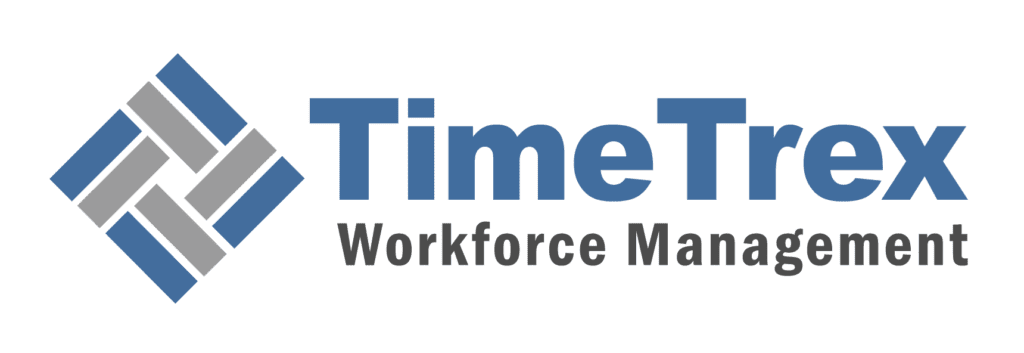Wage Stopwatch
Wage Stopwatch
See your earnings in real-time.
Earnings
$0.0000
Time Elapsed
00:00:00.0
Found our Free Wage Stopwatch useful? Bookmark and share it.

Global FIFO & Rotational Work Compensation
This comprehensive guide analyzes the compensation structures for Fly-In Fly-Out (FIFO) and other remote rotational work in the mining, oil & gas, and construction sectors across Australia, Canada, and the United States. If you're considering a career in FIFO work, understanding the global landscape of FIFO compensation, salary benchmarks, and total rewards packages is crucial. This article provides detailed insights into rotational work pay, industry-specific wages for roles in mining, oil and gas, and construction, and what to expect from this demanding but highly rewarding career path.
Article Index
TL:DR
Compensation for FIFO (Fly-In Fly-Out) and remote rotational work is significantly higher than national averages in Australia, Canada, and the US, reflecting the job's demanding nature. Australia leads with the most mature market, offering average FIFO salaries from AUD $113,000 to $141,000, boosted by allowances and covered living costs. In Canada, union influence in mining and oil sands sets a high floor, with skilled trades earning CAD $70,000-$120,000 annually. The United States offers exceptionally high pay, especially in oil and gas (average USD $134,364), with offshore roles earning a significant premium. The total rewards package—including covered expenses, allowances, and benefits—is the key to attracting talent. The global energy transition is expected to intensify the "talent war" for skilled professionals, likely driving wages higher across all three nations.
The Global FIFO Work Model: An Operational and Economic Overview
The Fly-In Fly-Out (FIFO) employment model is a cornerstone of industries operating in remote locations. Understanding its structure, economic drivers, and impact is essential for anyone considering a career in this field.
Defining the FIFO Model
The FIFO model involves transporting workers, usually by air, from their homes to a remote worksite for a work period called a "roster" or "swing." After the roster, they are flown home for a rest period. This approach, along with similar Drive-In Drive-Out (DIDO) models, allows companies to access a wide talent pool without building permanent towns, which is especially cost-effective for projects with a finite lifespan, like a specific mine or construction project.
Common Roster Structures and Working Hours
The rhythm of FIFO life is set by the roster cycle—the ratio of days worked to days off. These schedules directly impact your annual earnings and work-life balance.
- Even-Time Rosters: Schedules like 14 days on/14 days off (14/14) or 8 days on/6 days off (8/6) are often preferred for their balance.
- Compressed Rosters: Demanding schedules like 2 weeks on/1 week off (2/1) or 4 weeks on/1 week off (4/1) maximize on-site time but offer shorter relative breaks.
During the "on" period, workdays are long, typically 10-12 hours, seven days a week. This intense work schedule is a key reason for the high compensation.
The Total Rewards Proposition: Beyond the Base Wage
FIFO compensation is more than just a salary; it's a total rewards package. The high pay acknowledges the long hours and time away from family. Key components include:
- Elevated Base Pay: The core salary or hourly rate is significantly higher than in metropolitan areas.
- Allowances and Uplifts: Extra payments for working in remote locations ("site allowance"), on difficult schedules ("roster uplift"), or during night shifts.
- Covered Living Expenses: A huge financial benefit where the employer covers flights, accommodation, and meals, drastically increasing your savings potential.
Deep Dive: Australia's FIFO Compensation Landscape
Australia has the world's most mature and transparent FIFO market, centered in the resource-rich states of Western Australia and Queensland. The compensation here often serves as a global benchmark.
Wage Benchmarking by Industry and Role
FIFO salaries in Australia far exceed the national median income. While general estimates place the average FIFO salary between AUD $113,000 and $141,000, earnings vary widely by industry, skill, and role.
Australian FIFO Salary Ranges (Annual, AUD)
| Industry | Role Category | Example Role | Typical Annual Salary Range (AUD) |
|---|---|---|---|
| Mining & Resources | Entry-Level/Support | Haul Truck Operator | $75,000 – $95,000 |
| Mining & Resources | Skilled Trades | Heavy Diesel Fitter | $175,000 – $180,000+ |
| Mining & Resources | Experienced Operator | Miner / Bogger Operator | $150,000 – $170,000 |
| Mining & Resources | Professional | Mining Engineer | $120,000 – $160,000+ |
| Oil & Gas | Professional | Drilling Engineer (Offshore) | $150,000 – $225,000+ |
| Oil & Gas | Management | Production Manager (WA) | $153,000 – $204,000 |
| Construction | Professional | FIFO Engineer (Senior) | $160,000 – $200,000+ |
Deep Dive: Canada's FIFO Compensation Landscape
In Canada, FIFO work is crucial for mining projects in the northern territories and for the Alberta oil sands. The market is heavily influenced by strong trade unions, which ensures stable wages and comprehensive benefits for many workers.
Wage Benchmarking by Industry and Role
Canadian FIFO compensation is robust, with government data providing reliable benchmarks. A significant union presence often leads to standardized pay scales and regular increases through collective bargaining.
Canadian FIFO Salary Ranges (Annual, CAD)
| Industry | Role Category | Example Role | Median Hourly Rate (CAD) | Typical Annual Salary Range (CAD) |
|---|---|---|---|---|
| Mining | Entry-Level | Mine Labourer | $28.00 | $50,000 – $70,000 |
| Mining | Skilled Trades | Heavy-Duty Mechanic | $40.00 | $75,000 – $100,000 |
| Mining | Professional | Mining Engineer | N/A | $90,000 – $120,000+ |
| Oil & Gas | Management | Production Manager (AB) | $75.00 | $140,000 – $180,000+ |
| Construction | Supervision | Construction Supervisor | ~$48.00 | $75,000 – $105,000 |
Deep Dive: The US Remote Rotational Work Landscape
The US market for remote rotational work is dominated by the oil and gas sector (onshore in basins like the Permian and offshore in the Gulf of Mexico) and mining (in states like Alaska and Nevada). A key challenge in researching US data is that "FIFO" is often used for inventory management, skewing salary data. We focus here on true "remote rotational work."
Wage Benchmarking by Industry and Role
The US oil and gas sector offers some of the highest-paying rotational jobs globally, with a significant pay premium for offshore work. The average salary for the entire Oil & Gas Extraction industry is an impressive USD $134,364.
US Remote Rotational Work Salary Ranges (Annual, USD)
| Industry | Role Category | Example Role | Typical Annual Salary Range (USD) |
|---|---|---|---|
| Oil & Gas (Onshore) | Skilled Operator | Service Unit Operator | $55,000 – $80,000 |
| Oil & Gas (Offshore) | Entry-Level | Offshore Roustabout | $50,000 – $80,000 |
| Oil & Gas (Offshore) | Management | Drilling Supervisor | $160,000 – $200,000+ |
| Mining | Entry-Level | Surface Miner | $52,000 – $69,000 |
| Mining | Professional | Mining Geologist | $90,000 – $110,000+ |
| Construction | Supervision | Site Supervisor | $70,000 – $95,000+ |
Cross-Regional Analysis and Strategic Outlook
When comparing earning potential, it's crucial to look at salaries in a standardized currency (USD) and consider the total value of the compensation package. Australia often leads in standardized pay, especially for skilled trades, while the US shows extremely high potential at the top end, particularly for specialized offshore oil and gas roles.
Comparative Salary Ranges (Standardized in USD)
| Role | Australia (USD) | Canada (USD) | United States (USD) |
|---|---|---|---|
| Entry-Level Operator | $50,000 – $65,000 | $37,000 – $52,000 | $45,000 – $70,000 |
| Skilled Trades (Electrician/Mechanic) | $90,000 – $125,000+ | $56,000 – $75,000+ | $70,000 – $95,000+ |
| Mining Engineer / Geologist | $82,000 – $115,000+ | $67,000 – $90,000+ | $90,000 – $110,000+ |
| Drilling Supervisor (O&G / Mining) | $85,000 – $112,000+ | N/A (High, variable) | $160,000 – $200,000+ |
Future Trends: The Energy Transition and the "Talent War"
Looking ahead to 2025 and beyond, the global shift to renewable energy is creating huge demand for critical minerals like lithium, cobalt, and copper. This is sparking a "talent war" for skilled professionals. The same electricians, engineers, and project managers needed for traditional oil, gas, and coal are now in high demand for new energy mineral projects. This competition will likely drive wages even higher as legacy sectors fight to retain their workforce.
Strategic Recommendations for FIFO Professionals
For individuals seeking or currently in FIFO roles, a strategic approach can maximize career success and financial reward.
For Employers and HR Leaders
- Adopt a Total Rewards Communication Strategy: Clearly show the full financial value of an offer, including the cash value of benefits like flights, accommodation, and meals.
- Benchmark with Granular Precision: Use industry-specific and region-specific data rather than generic national averages to set competitive pay.
- Invest Proactively in Worker Well-being: High pay is not enough. To retain top talent, invest in mental health support, better on-site amenities, and balanced rosters to prevent burnout.
For FIFO Professionals and Job Seekers
- Analyze the Roster as a Primary Factor: A higher salary on a brutal 4/1 roster might be less desirable than a slightly lower salary on a balanced 2/2 schedule. Calculate your effective hourly rate.
- Negotiate the Full Package: Don't just focus on the base salary. Ask about site allowances, bonuses, accommodation quality, and the full scope of health and retirement benefits.
- Future-Proof Your Skills: The future is in critical minerals. Develop skills in electrical trades, data analytics, and automation that are transferable from traditional energy sectors to the growing renewables industry.
Simplify Your FIFO Payroll & Workforce Management
Managing complex rotational schedules, allowances, and compliance for a FIFO workforce is challenging. TimeTrex offers a powerful, all-in-one solution for time tracking, scheduling, and payroll designed for the unique demands of the resources sector.
Learn More About TimeTrex PayrollDisclaimer: The content provided on this webpage is for informational purposes only and is not intended to be a substitute for professional advice. While we strive to ensure the accuracy and timeliness of the information presented here, the details may change over time or vary in different jurisdictions. Therefore, we do not guarantee the completeness, reliability, or absolute accuracy of this information. The information on this page should not be used as a basis for making legal, financial, or any other key decisions. We strongly advise consulting with a qualified professional or expert in the relevant field for specific advice, guidance, or services. By using this webpage, you acknowledge that the information is offered “as is” and that we are not liable for any errors, omissions, or inaccuracies in the content, nor for any actions taken based on the information provided. We shall not be held liable for any direct, indirect, incidental, consequential, or punitive damages arising out of your access to, use of, or reliance on any content on this page.
Trusted By
Trusted by 3.2M+ Employees: 21 Years of Service Across Startups to Fortune 500 Enterprises
Join our ever-growing community of satisfied customers today and experience the unparalleled benefits of TimeTrex.










Strength In Numbers
Join The Companies Already Benefiting From TimeTrex
Time To Clock-In
Start your 30-day free trial!
Experience the Ultimate Workforce Solution and Revolutionize Your Business Today
- Eliminate Errors
- Simple & Easy To Use
- Real-time Reporting

Saving businesses time and money through better workforce management since 2003.
Copyright © 2025 TimeTrex. All Rights Reserved.
